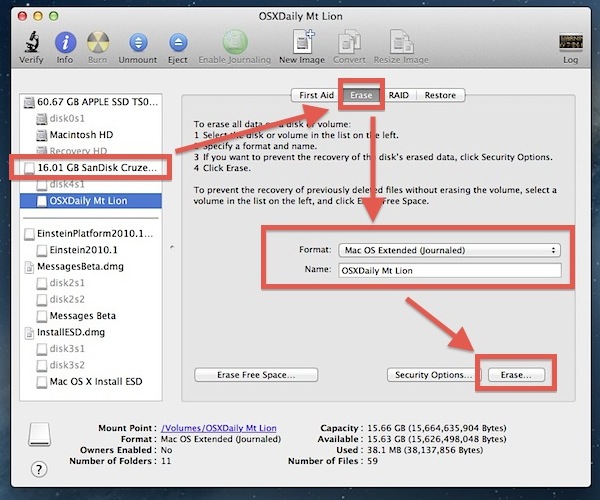

Name them and set their formats to Mac OS Extended (Journaled).
#OSX CMD FOR VOLUME FREE SPACE PLUS#
In Disk Utility, click the "Partition" tab and click the plus button to create a new partition (or as many as you would like), and resize them accordingly. If you cannot repartition because of a lack of space, try copying some large files to an external drive or use a drive defragmentation utility such as iDefrag or Drive Genius to create more contiguous free space on the drive. Keep in mind you will not be able to partition used space, and you may be limited based on how much available space is on the drive and the extent of fragmentation on the drive. Open Disk Utility and select the hard drive to partition.

Keep in mind the system will need to accommodate any applications you install, as well as require about 10 percent free space (as a rule of thumb) to accommodate virtual memory for smooth operation.Ĭreate the partitions Create partitions at the size you would like for each user to have, ensuring you leave some space free (at least 10 percent) on the boot drive. If you have a 500GB hard drive, then you will need to first plan out how much you would like to dedicate to each user (100GB?, 150GB?) and how much you would like to dedicate to the system. This step is basically to determine how many partitions to make and what their sizes should be. If you would like to set up a user's account on a separate partition or disk, do the following:ĭetermine the number of users that will be on the system Additionally partitions make it difficult to allocate more space since doing so would require expanding and shrinking of the partitions, which introduces a higher risk of data loss. For one, having nonboot partitions available makes them easier to format (active boot partitions cannot be inadvertently formatted). Using partitions in this way will work however, it does not come without some drawbacks as well. Additionally, If a user's folder is larger than the available space on the drive, then it may require some cleaning or the user of an intermediary drive to store the user's files while the partitions are being set up. This is best done when the computer is being first set up, because it limits the amount of copying and migration needed to be done. If you know exactly how many people will be using your system, you can set up individual partitions for their home folders, copy their home directories to those partitions, and then map their account's home folder paths to the new home's location. For the most part this just takes some chatting with the other members of a household or workplace, but to avoid confrontations you can set up the system in various ways to limit a user's disk space use. If a user has write access to a file system, then they can fill the drive until there is no space left for others.

One drawback to having multiple users on OS X is there is no easy way to limit the amount of disk space used by that user.


 0 kommentar(er)
0 kommentar(er)
